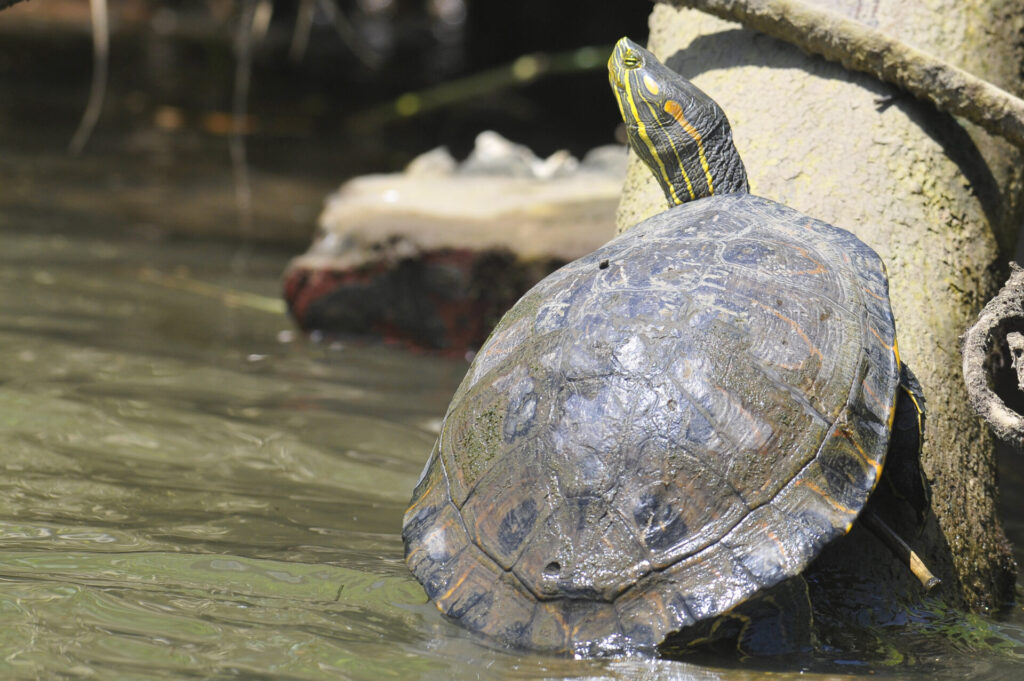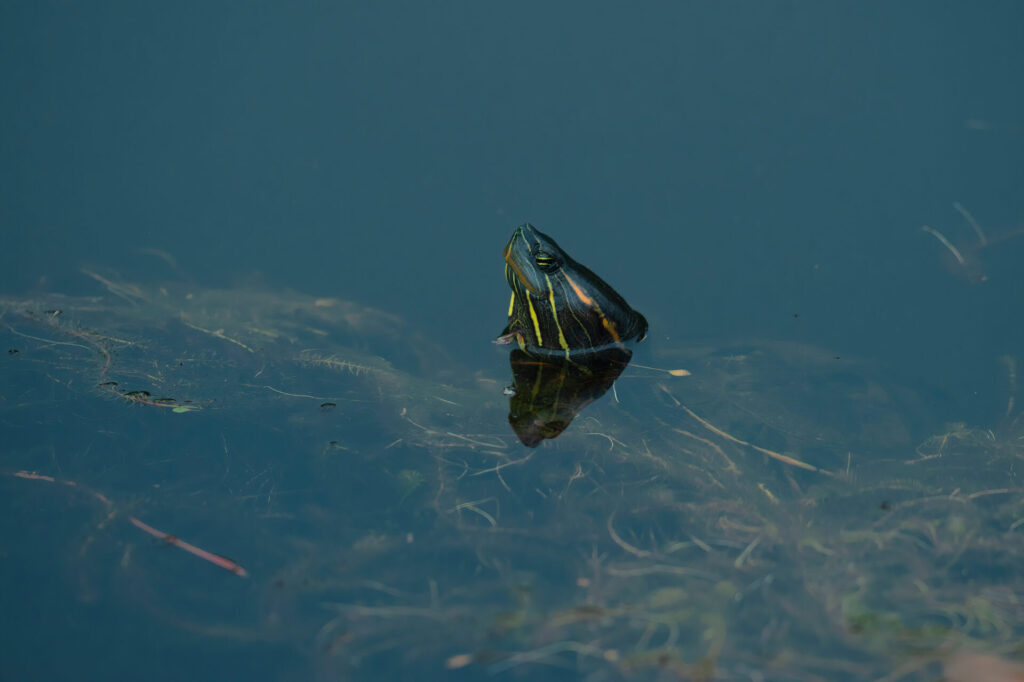
Land turtles are into the 225 species of reptiles in Costa Rica with 3 orders and 31 families.
We will focus on a family of terrestrial, semi aquatic carnivorous turtles. Although we have 6 families in total including the largest living specie Leatherback. There are dozens of sites on where “arribadas” can occur yet the best known are Ostional in Guanacaste province and Tortuguero at the Caribbean Sea. Arribadas are those massive sea turtle visits to the beaches to lay eggs at one single day (24 hours) well over 50 thousand females can arrive to deposit between 65-85 eggs each. The incredible number of sea turtles is overwhelming its literally impossible to walk without stumble in one or two. At Jaco-Hermosa beaches the number is lot less, old tales reckon hundreds of them laying eggs at Hermosa-Pochotal. Actual Playa Hermosa Wildlife Refuge, the over explotaition for its meat and above all its eggs (consider by many as an aphrodisiac); another cause of declining could be the poor control of land use specially on real estate developments. Sure enough some of those urbanistic projects had cause the decline of the specie we can’t state that is a main cause; in fact many of them had contribute to the creation of the wild life refuge at Hermosa Beach.
Land and semi aquatic turtles are found mostly in lowlands whereas there are plenty water bodies that could be seasonal or permanent. Seasonal as during the rainy season and permanent as rivers, lagoons, streams etc.
In Central Pacific one of the best places yet not easy is Rio Grande de Tarcoles. They are occasionally found within fallen trees roots and/or branches; due the very large number of American Crocodiles (Cocodrilus aucutus) finding them is somewhat difficult. A very common place to located Trachemys venusta Mesoamerican Slider are road sides after or during heavy down pours. This carnivorous turtle feeds on River Crabs, Fresh water Crabs (1300 species worldwide), shrimps, frogs, lizards, insects and could even feed on bird chicks if found. But its diet is not restricted to meats could also feast on plant material such as leaves, fruits, and flowers. With a maximum” length of 50 cm and well over 5 kilos this powerful and aggressive reptile could easy snap off a finger out your hand. Females tend to be larger with very long claws which use to dig deep to lay its eggs. Nesting occur away from water due is high risks such as predator and the level rising.

Sadly the use of its body parts for local artisans, meat and most at all the black market of domesticated turtles is with no doubts the larger problem for this endangered species.
The other two species of “land” turtles are equally or even more threated by the same reasons or even more in the case of the recently separated specie Nicaragua Slider, found exclusively in Costa Rica and Nicaragua.
Amongst some of its natural predators are raccoons, coatis, snakes such as boa constrictors, mangrove boas, caymans, crocodiles, tayras, weasels, white face capuchins, Collared Peccaries, jaguarundies, ocelots, pumas, spiny taile lizards, Ctenosaurus lizards, long legged birds such as herons.
https://es.wikipedia.org/wiki/Anexo:Reptiles_de_Costa_Rica
http://www.coterc.com/uploads/1/6/1/8/16182092/raphia_-_fall_2018.pdf
